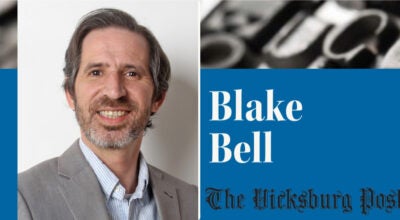Society can’t afford cost of child abuse
Published 12:00 am Sunday, April 19, 2015
By guest columnist Shaheena Haque
Too often, we assume that child abuse occurs in communities other than our own, but child abuse does not discriminate. It transpires across the social, racial, ethnic, educational and financial spectrums. Just because you cannot see it does not mean it is not there. Unfortunately, symptoms of child abuse are also not always easy to recognize, as it is not only physical maltreatment but also emotional abuse that leaves very deeply rooted scars.
Just as adults have basic inherent rights as members of society, children have a right to live a safe childhood. However, the people who should be the force behind protecting these rights for children may also deny them.
A victim of child abuse and neglect has no place to go and no one to protect them. Society often portrays children as its first priority, but its actions tend to gravitate towards the well being of adults rather than focusing primarily on children.
Findings from recent research reveal the long-term impact child abuse and neglect can have on children and communities, and to mitigate these negative effects, society cannot be indifferent towards protecting innocent children.
In this day and age, it is hard to fathom how an organization to prevent cruelty toward animals was formed long before any agency was formed to help the suffering children. It was not until 1962 that battered child syndrome was first documented and child abuse was medically recognized.
As brain scanning has made it possible for scientists to examine and understand what happens in our brains, Adrian Raine, a British neuroscientist, moved to California to study how the brains of violent criminals, including convicted murderers, work.
His studies revealed a similar pattern in the brain waves of these individuals. Almost all of them had reduced activity in their pre-frontal cortex, the part of the brain that controls human emotional feelings, and more activity in their amygdala, the part that flares up emotions. Raine’s research further revealed that these homicidal individuals were unable to have empathy for others, and at the same time, were very likely to have outbursts of violent temper.
Violent tendencies are widespread among children who are victims of abuse and neglect. Children who are subjected to unimaginable deprivation—left unattended for days in their cribs, beaten and bruised, burned, broken bones, scalded, starved, and sexually abused—can grow up not knowing the presence of a caring adult in their lives.
For the proper development of a human mind, a child needs to formulate a close bond with a mother or caretaker early in life. Abused and neglected children can be deprived of this bond, which may result in high levels of stress hormones in their system. This leads to impaired thinking and damaged emotional development.
The numbness of their minds, due to the chemical imbalance, affects their cognitive development, and they are unable to process complex thoughts, which in turn can lead to “lack of consciousness.” Their cognitive and emotional functioning can be quite different from a child who grew up with a safe bond with a caretaker.
Unfortunately, child abuse can cause lifelong injury and impairment. Victims face poor prospects for success in school. Due to the immense neurological damage inflicted upon them, they face developmental delays, negative self-concept, and impaired capacity to trust others.
Victims of child abuse are much more likely to engage in criminal behavior as adolescents and adults. Over two-thirds of youth arrested for crime have a prior history of abuse and neglect. Studies indicate that close to 90 percent of juvenile delinquents, prostitutes, and hard-core criminals were subjugated to abusive environments.
Furthermore, abused children’s thought processes can be deprived of compassion, and they may not have the capacity of feeling their own pain or the pain they inflict on others. As a society, we must recognize this and assist these children before the damage is too great.
The estimated minimal annual cost of child abuse and neglect in the United States totals billions of dollars for an assortment of needs—child welfare, health care, out-of-home care, foster care, apprehension, prosecution, and incarceration of criminals, physical and mental disorders treatment of victims, and substance abuse problems—all related to child maltreatment.
This cost only partially accounts for expenses, as it does not include other costs related to child abuse, such as long-term physical and mental injury, emergency room care, lost of productivity, family reunification services, special education classes, and costs to adjudicate child abuse cases.
Experts and politicians provide a litany of solutions, professing, “It takes a village to raise a child.” For whatever reasons, if a parent is unwilling or unable to take care of his or her children, then it becomes the community’s responsibility. If more people from the “village” assist and support children and look after their rights, it would provide a much safer and healthier environment for these children.
In 1983, during his presidency, Ronald Reagan proclaimed the month of April as Child Abuse Prevention Month. While society should not think about the topic for only one month of the year, it is a good reminder for us to take time to reflect on the issue.
Preventing child abuse should be everyone’s concern. As citizens of the community, we can enhance the safety of children and strengthen families by being good neighbors. How? Offer to babysit children of stressed parents; help a parent struggling with his or her parenting responsibilities; make a difference in a child’s life.
•
Shaheena Haque is a child abuse prevention advocate and can be reached by email at shaheenahaque@gmail.com





